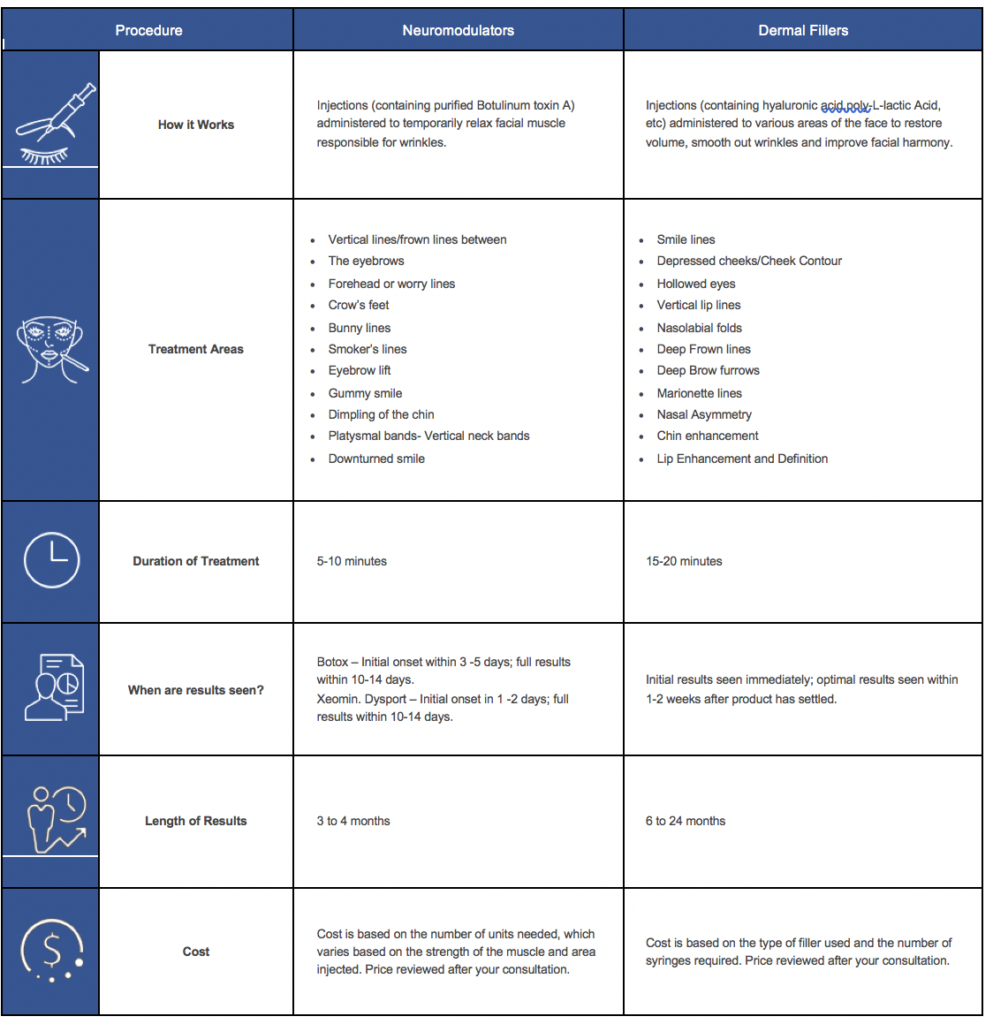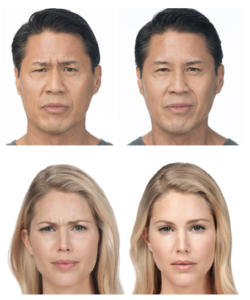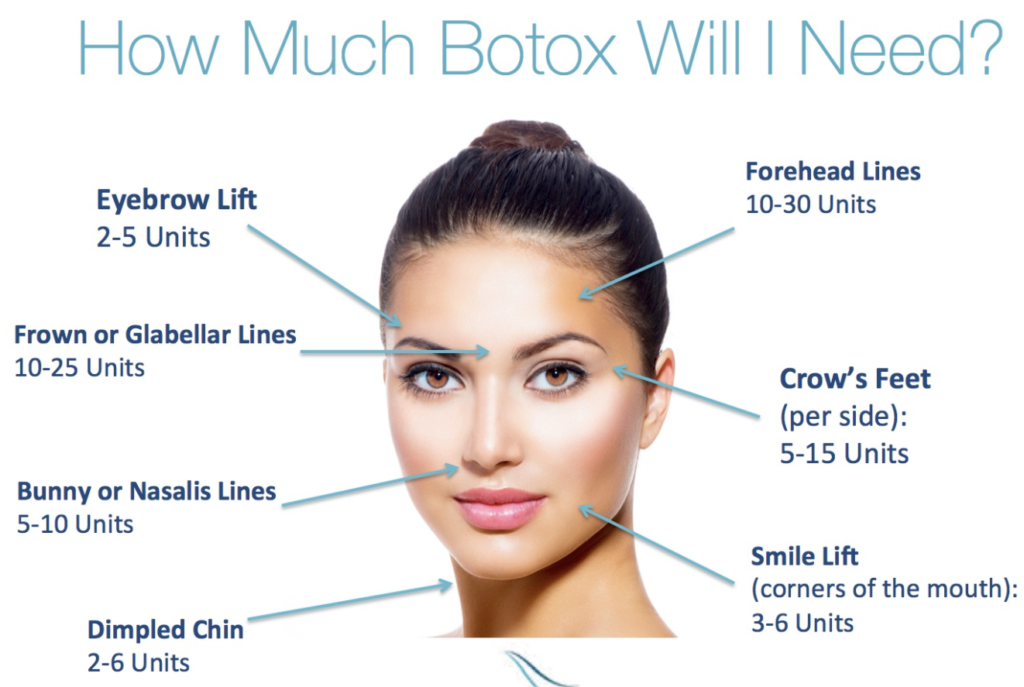
Botulinum toxin injections to reduce the appearance of wrinkles caused by expressive muscles are among the most common cosmetic procedures done today. Though BOTOX® is perhaps the best known, it’s not the only injectable that uses the botulinum toxin. We also use Xeomin® and Dysport®
. Each product has different properties, giving a range of treatment options.
Similarly, the clinic uses dermal fillers: Radiesse® and Belotero®. These dermal fillers differ in that Radiesse uses calcium hydroxyapatite while Belotero uses hyaluronic acid. Each substance fills out passive voids under the skin differently, making each a valuable treatment tool for different parts of the face or different filler effects. The differing characteristics between products permit a more comprehensive range of effective cosmetic treatments.
When it comes to eliminating wrinkles of expression (such as crow’s feet), Botulinum toxin injections are the procedure of choice.
As a general rule, lines of expression require Botox, while lines at rest need filler. Botox relaxes the dynamic muscles that cause creases and wrinkles, while the filler is best for deeper lines that are apparent even when facial muscles are not contracting. Filler can also replace lost volume and add contour and definition to the face. For more information about these cosmetic injactables, please see other posts.
Your facial skin may appear healthy and have a normally smooth surface, but as soon as you smile or frown, those annoying crow’s feet and other lines form. These are called dynamic wrinkles, and they’re the result of countless thousands of muscle contractions that pinch the skin. As your skin ages, these crimps become more and more prominent. In order to reduce expression lines and dynamic wrinkles, we recommend BOTOX® or Dysport® injections.
These injectable fluids help keep the skin surface smooth by inhibiting muscle contractions. You can still make a pouting or frowning expression, but the relaxed upper-level muscles prevent the fine wrinkles from appearing even when you do. BOTOX® and Dysport® are similar in terms of their content, but they work a bit differently.
The Signs of Aging Skin
As you continue to age and mature, your skin retains less moisture. It also contains less and less important proteins that give the skin layers their strength and structure. Skin that is no longer taut and supple may still look smooth as long as the muscles are relaxed, but the skin takes on a brittle, wrinkled look as soon as these muscles contract. This is especially visible around the eyes and on the forehead.
Muscles that lie deeper down also control skin movement, but these muscles don’t pull on the skin surface as much as the muscles that lie just beneath the dermal layers. It’s these upper-level muscles that are targeted by BOTOX® or Dysport® injections.
How BOTOX® and Dysport® Work
We will examine your skin closely during a consultation and watch as you perform some smiling and frowning expressions. This tells us how much of the injectable fluid to use in order to reduce expressions lines and other dynamic wrinkles on your face.

BOTOX® is a bit more concentrated in terms of the main ingredient amount. Dysport® is less concentrated and tends to spread out under the skin after it’s injected. The choice of which to use depends on the results of our examination.
Once injected into the muscle tissue to reduce expression lines, the solution effectively blocks nerve signal transmission. Your sensory nerves aren’t affected. The relaxation of the muscles that lie beneath the skin means a smoother surface and fewer dynamic wrinkles and expression lines no matter how much you smile, widen your eyes, or purse your lips. The treatment works on forehead lines, too.

Interesting info
Botox generates 3 billion in revenue for Allergan annually
BOTOX isn’t patented; instead its a trademarked recipe (like Pepsi or Coke)
